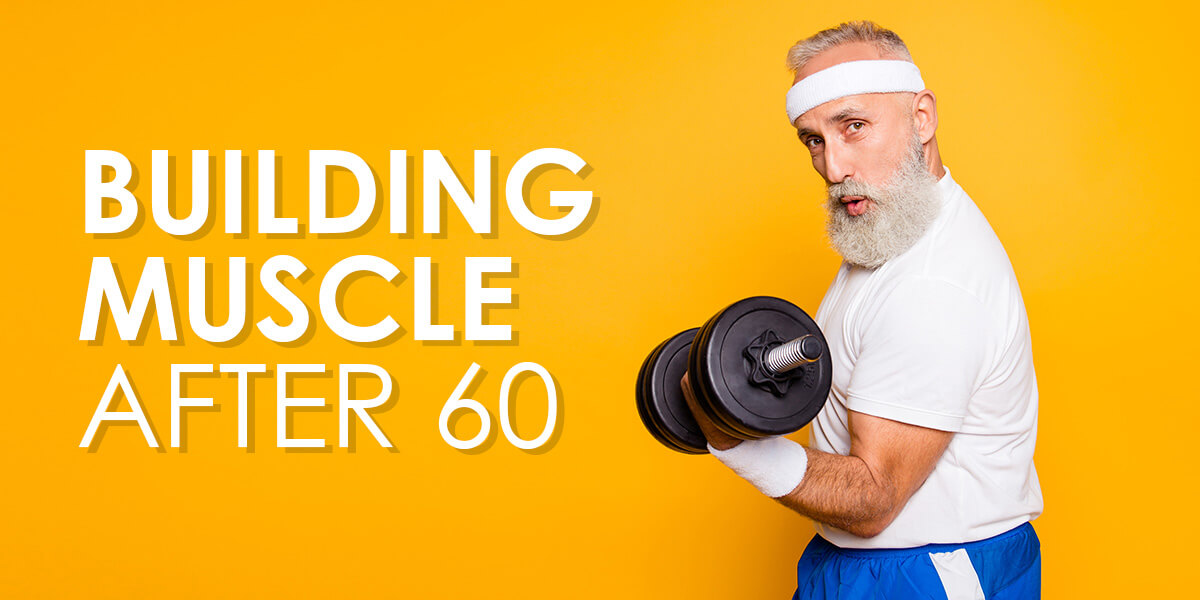Building Muscle After 60: How Is It Possible?

Many people wonder whether there is a point to building muscle after a certain age. There is ALWAYS a point because building muscle doesn’t have an age limit.
However, starting as early as age 40, our muscles begin to deteriorate faster than they can rebuild, and we lose 1-3% of our muscle mass a year. This muscle loss, often known as Sarcopenia, affects strength and endurance as we age.
It’s all about creating a regimen for strength building, and compound exercising helps maintain your muscle while promoting growth. And don’t forget to add Rejuvenate Muscle Health to your daily regimen to boost your workouts and stock up on essential amino acids.
The Misconception About Building Muscle
There’s this idea that building muscle is unachievable as we age. This is not reality at all. Yes, we might not be able to build it as easily as we used to when we were younger, but Research Strategy & Outline Version 1 QA
that doesn’t restrict the possibility altogether. Our body’s physiology does not alter entirely to the point of not being impacted at all by strength training.

What If You Start Working Out Later In Life?
Even if you begin working out later in life, there’s still potential for muscle growth. It’s all about modifying your diet and exercise regimen. There are countless studies that suggest several benefits for weight training over the age of 60.
It’s best to start by incorporating HIIT into your routine.
HIIT (High-Intensity Interval Training) is a combination of short intensive exercises with intervals of rest or less intensive exercises. From squats to pushups to treadmill running, this concept can be applied to most exercises. It’s beneficial for burning calories and building muscle.
The Key to Muscle Growth
Maintaining a diet rich in protein paired with a regular workout schedule will benefit our bodies in our quest to build muscle.
Moreover, to excel at any movement or type of workout, it is best to start slowly and gradually add speed. As we get older, we begin to lose type II or fast-twitch muscle fibres, typically due to lack of stress or inactivity on these tissues. These muscle fibres are responsible for our ability to lift heavy objects and use our speed and stamina, vital for functional activities and fall prevention. One of the easiest ways to activate these fibres is to carry heavy weights or run quicker. Not only will this help improve your stamina, but also your reaction time.
Achieving muscle growth is simple through proper nutrition, exercise, and adequate rest and recovery. Of course, the soreness will be a result of working hard, but consider that as motivation. When the body is sore, your body sends blood into the muscle fibres with healing nutrients.
In modern times, strength training favours a high level of complexity, whether it be functional training, multiple movements, incorporating cardio, cross-fit, or yoga. However, all are key to muscle growth.
What Are the Benefits of Strength Training?
Strength training encourages hypertrophy and increases bone mineral density.
Some of the most famous bodybuilders, such as Sam Bryant and Ernestine Shepherd, are living proof that age is just a number. Despite being older than 50, they’re in better shape than their younger contemporaries. You are never too old to change your exercise and diet.
Vast amounts of research advocate the benefits of weight training over the age of 60.
A 15-year study conducted in the journal Preventive Medicine in 2016 revealed that strength training was associated with lower mortality in older people. In addition to increasing your lifespan, it also prevents chronic diseases, increases body composition and reduces muscle loss, lowering the risk of metabolic problems.
Don’t get us wrong - building muscle after 60 is difficult, but it is also entirely doable. Be prepared to change your diet, commit to regular exercise and modify your lifestyle habits.
To Achieve Goals, We Need to Set Them First
After the age of 60, your body will not change as quickly as it would if you were younger. It needs both time and discipline to rebuild muscle; therefore, it is important to set realistic goals and implement long-term lifestyle changes.
Evaluate Your Fitness Level
If you are new to the game or have not worked out in a long time, concentrate on increasing your stamina and strength. We suggest setting specific goals as you progress, such as losing weight or building muscle.
A reasonably fit person will find it easier to stick to a fitness regimen and gain lean mass. But ensure that you have reasonably attainable goals. Maintain your fitness routine, monitor your progress and make adjustments to your routine as required.

Create A Personal Plan
It is important that your workout routine aligns with your fitness level and goals. So make sure that the goals you set matter to you now, versus the goals you may have set 20 to 30 years ago.
When aiming to gain muscle, it is best to prioritize strength training and full-body circuit training. If you also wish to shed some weight, incorporate some cardio into your workout.
Aerobic exercise is excellent for the heart and improves physical endurance, but it has little or no effect on hypertrophy. Instead, it can actually impede your progress.
If your goal is to build muscle, skip cardio. Instead, concentrate your efforts on lifting and strongman workouts, while putting diet and recovery first.
Utilize Compound Exercises
Different exercises yield different results. Bench presses, pushups, squats, pullups, lunges, deadlifts and other compound exercises provide the highest outcomes in hypertrophy. They work with nearly every muscle and joint in your body, resulting in quicker gains.
Foremost, compound exercises enable you to lift heavier weights than you would when performing single-joint movements. Resistance training with a high load delivers better strength gains as opposed to low-load resistance exercises.
Compound exercises are sufficient for building muscle and stamina. In contrast, single-joint exercises are only used to correct muscular imbalances or reinforce specific muscles, such as biceps or calves.
The most significant advantage of compound workouts is that they can increase testosterone levels. An increase in testosterone and growth hormone is also attributed to squats and deadlifts. Researchers have found that exercising with free weights produces more hormonal responses than training with gym equipment.

As you have probably heard many times before, diet and exercise are equally important.
Fueling your body with nutritious food will make all the difference in gaining lean muscle mass, regardless of your age.
For tips on healthy eating, check out our blog on focus foods for healthy ageing.
Ensure that your diet incorporates sufficient levels of protein, carbs and healthy fats as well as micronutrients. To rebuild muscle growth and help prevent muscle loss, consider increasing your protein intake.
While on a diet, quality protein sources, including whey, can help reduce body fat and conserve lean mass.
Journal Sports Medicine conducted a study in 2015 which concluded that protein supplements had little impact on untrained adults. Though, as training volume, duration, and frequency increase, they can aid in developing muscle size and strength and enhancing aerobic and anaerobic capacity.
Lean meat, fish, eggs, greek yogurt, cottage cheese, lentils, beans, and quinoa are excellent sources of protein-rich foods. Contingent on your activity level, consider incorporating protein supplements into your diet. Protein shakes for example, are best before and after your workout as they promote a maximum anabolic response.

Exercise after the age of 60 presents unique difficulties, primarily for those of us who have not worked out in years. Whether it be weightlifting, cardio or another type of exercise, they put the body and central nervous system under stress. Hence, it is crucial to get adequate rest.
According to the American Council on Post-Exercise Recovery, muscle damage and injury can result from inadequate recovery. It can also influence physical fitness and the body’s capacity to replenish glycogen stores. The more strenuous your workout, the more rest you require.
Avoid working out the same muscle groups back-to-back. Instead, take two to three days off from training per week to enable the body to heal from exercise and rebuild weakened tissues.
Consider using alternative methods to expedite the recovery process. This can include stretching, foam rolling, or a sports massage.
Consult a physiotherapist if you are continuously feeling muscle pain, back pain or other aches.




